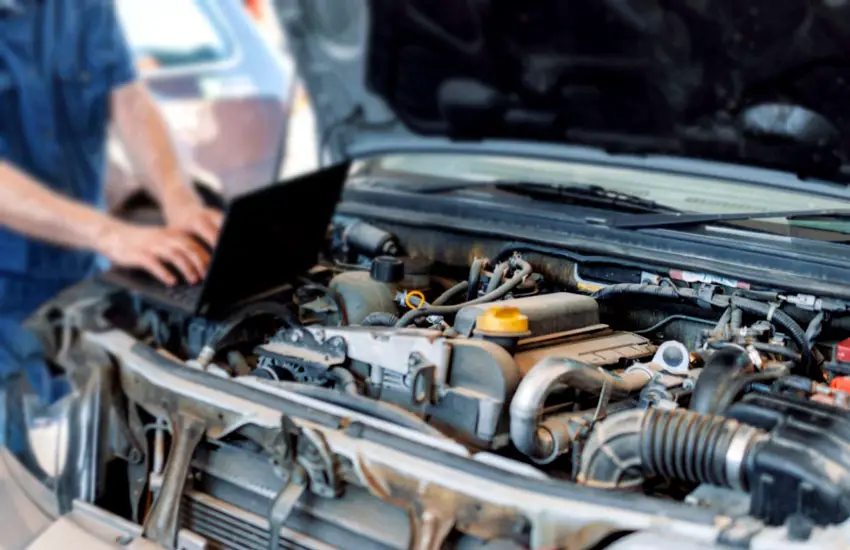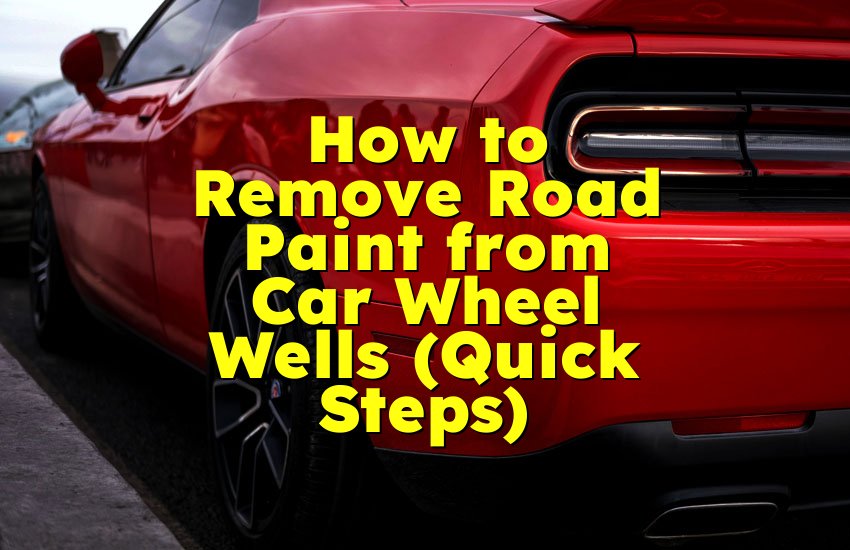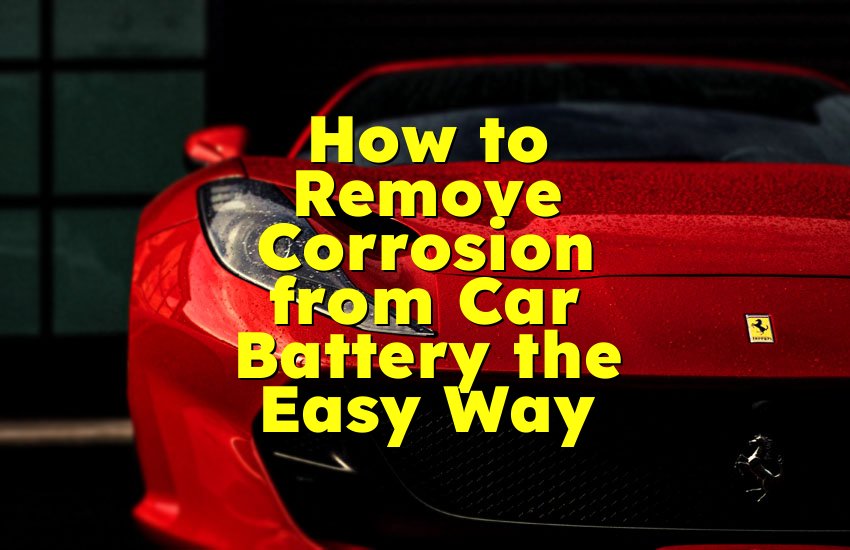As an Amazon Associate, I earn from qualifying purchases at no extra cost to you.
5 Reasons for Transmission Whine and How to Stop It!
You might have noticed a whining noise coming from your car’s transmission. It can be pretty annoying, right? Luckily, there are ways to fix it. In this guide, we’ll show you simple steps to stop that whine and get your car running smoothly again. Whether it’s a small adjustment or a fluid change, we’ll cover everything you need to know.

What Causes Transmission Whine?
Transmission whine is a high-pitched sound that can come from your car’s transmission. It’s not just annoying; it can be a sign that something is wrong. Here’s what might cause it.
Low Transmission Fluid
One of the main reasons for transmission whine is low transmission fluid. The fluid is essential because it helps to lubricate all the moving parts inside the transmission. If the fluid level is too low, the parts can rub against each other, causing a whining sound. You might also notice that the car is not shifting gears smoothly.
Worn-Out Gears or Bearings
Over time, the gears and bearings inside the transmission can wear out. When this happens, they don’t fit together as smoothly as they should. This can create friction and cause a whining noise. It’s a bit like when you spin a worn-out wheel on a toy—if the parts don’t mesh well, it makes noise.
Torque Converter Issues
The torque converter is an important part of your car’s transmission. It helps transfer power from the engine to the wheels. If the torque converter has problems, like a worn-out part, it can cause a whining sound. This is especially noticeable when you’re accelerating or slowing down.
Transmission Pump Problems
The transmission pump pushes fluid through the system, keeping everything running smoothly. If the pump isn’t working correctly, it might not move enough fluid. This can lead to whining noises. A faulty pump often makes noise when the car is in gear but not moving, like when you’re waiting at a red light.
Internal Transmission Damage
In more serious cases, internal transmission damage can cause a whine. This could be due to a number of issues, like damaged gears, broken parts, or worn-out components. If this is the cause, it’s important to get your car checked by a professional as soon as possible.
These are some common causes of transmission whine. It’s best to address the issue early to avoid further damage to your car.
How to Stop Transmission Whine: Step-by-Step Guide
1. Check the Transmission Fluid
One of the most common reasons for transmission whine is low or old transmission fluid. This fluid helps keep the transmission cool and lubricated. If there isn’t enough fluid, or if it’s dirty, the transmission parts can grind together, making a whining noise.
First, park your car on a flat surface and make sure it’s turned off. Open the hood and find the transmission dipstick. The dipstick is usually labeled and located near the engine. Pull the dipstick out, wipe it clean with a cloth, and then put it back in. Pull it out again to check the fluid level. The fluid should be between the "Full" and "Add" marks. If the fluid level is low, you’ll need to add more.
Next, check the color and smell of the fluid. It should be a bright red color and have a slightly sweet smell. If the fluid is dark, brown, or smells burnt, it’s time to replace it. Old or dirty fluid can lose its ability to lubricate properly, leading to that annoying whine.
To fix this, add the correct type of transmission fluid for your car. Be careful not to overfill it, as too much fluid can also cause problems. If the fluid is old or dirty, you may need to have it changed by a professional. Replacing the fluid can reduce or eliminate the whining noise, making your drive smoother and quieter.
2. Inspect the Transmission Filter
Another reason for transmission whine could be a clogged or dirty transmission filter. The filter’s job is to keep dirt and debris out of the transmission fluid. If the filter is clogged, it can restrict fluid flow, causing the transmission to make a whining sound.
To check the filter, you’ll first need to locate it. The transmission filter is usually inside the transmission pan, which is found at the bottom of the car. Make sure your car is securely lifted and supported before you begin. You may need a jack and jack stands to lift the car safely.
Once you’ve located the transmission pan, carefully remove it. Be prepared for some fluid to spill out, so have a drain pan ready. After removing the pan, you’ll see the transmission filter. Check it for any signs of dirt or debris. If the filter looks dirty or clogged, it’s time to replace it.
To replace the filter, purchase a new one that matches your car’s make and model. Remove the old filter by unscrewing it or pulling it out, depending on how it’s attached. Install the new filter by following the manufacturer’s instructions.
Once the new filter is in place, reattach the transmission pan and refill the transmission fluid. This should help improve fluid flow and reduce the whining noise.
3. Inspect the Transmission Components
Worn or damaged transmission components, like gears or bearings, can also cause a whining noise. These parts can wear out over time, especially if the transmission hasn’t been properly maintained. When gears or bearings are worn, they can cause a high-pitched whining sound, especially when you accelerate or shift gears.
To start, listen carefully to when the whining noise occurs. Does it happen only when you accelerate, or is it present all the time? This can help you figure out which part of the transmission might be causing the problem. If the noise is consistent, it could be a sign that one or more components are worn.
If you’re comfortable working on your car, you can inspect the transmission components for signs of wear. However, this can be a complex job, and it’s usually better left to a professional mechanic. If you decide to do it yourself, make sure you have the right tools and a service manual for your car.
If you find that any components are worn or damaged, they will need to be replaced. This could involve replacing gears, bearings, or other parts inside the transmission. Replacing these parts can be expensive, but it’s necessary to stop the whining noise and prevent further damage to your transmission.
4. Inspect the Transmission Mounts
Transmission mounts are responsible for holding the transmission in place and absorbing vibrations. If these mounts are worn or broken, they can cause the transmission to shift slightly, leading to a whining noise.
To inspect the transmission mounts, you’ll need to get under your car. Make sure the car is securely lifted and supported with jack stands. Once you’re under the car, locate the transmission mounts, which are usually found near the transmission and engine. There are typically two or more mounts holding the transmission in place.
Check the mounts for any signs of wear or damage, such as cracks, breaks, or loose connections. If the mounts are damaged, the transmission may not be properly aligned, which can cause vibrations and noise. You can also try gently moving the transmission by hand to see if it shifts or moves more than it should.
If you find that the mounts are damaged, they will need to be replaced. Replacing transmission mounts can be a bit tricky, especially if you’re not familiar with car repairs. If you’re unsure, it’s best to take your car to a mechanic. After replacing the mounts, test drive your car to see if the whining noise has stopped. Properly aligned and secure transmission mounts should reduce or eliminate the noise.
5. Check for Transmission Leaks
Transmission leaks can cause low fluid levels, which might be the reason for the whining noise. When there’s not enough fluid in the transmission, the parts inside can’t be lubricated properly, leading to noise and potential damage.
Start by looking under your car for any signs of transmission fluid leaks. Transmission fluid is usually red or pink, so it’s easy to spot. If you see fluid on the ground under your car, there’s likely a leak. Common areas where leaks occur include the transmission pan, seals, and transmission lines.
Once you’ve found the leak, you’ll need to fix it to stop the fluid from leaking out. The solution will depend on where the leak is coming from. If the leak is coming from the transmission pan, you might need to tighten the bolts or replace the pan gasket. If the leak is coming from a seal or a transmission line, you might need to replace the seal or repair the line.
After fixing the leak, it’s important to refill the transmission fluid to the correct level. Use the dipstick to check the fluid level, and add more if needed. Running the transmission with low fluid can cause serious damage, so it’s important to fix leaks as soon as possible. After the fluid level is back to normal, check if the whining noise has stopped.
6. Consider the Drive Shaft
Sometimes, the whining noise isn’t actually coming from the transmission itself but from the drive shaft. The drive shaft connects the transmission to the wheels and plays a crucial role in making your car move. If the drive shaft is damaged or out of balance, it can create a whining noise that might sound like it’s coming from the transmission.
To check the drive shaft, you’ll need to get under your car. Make sure the car is securely lifted and supported with jack stands. Once you’re under the car, locate the drive shaft, which runs from the transmission to the rear of the car (in rear-wheel-drive vehicles). Inspect the drive shaft for any signs of wear or damage, such as dents, bends, or loose connections.
If the drive shaft is damaged, it may need to be repaired or replaced. This is a job that’s best left to a professional mechanic, as it can be complex and requires special tools. If the drive shaft is out of balance, a mechanic can balance it for you. A balanced drive shaft should reduce or eliminate the whining noise.
7. Seek Professional Help
If you’ve tried all these steps and the whining noise is still there, it’s time to seek professional help. Transmission issues can be complex, and sometimes the problem isn’t something you can fix on your own.
Find a trusted mechanic who has experience with transmissions. When you take your car in, explain the problem and what steps you’ve already taken to try to fix it. The mechanic will be able to diagnose the issue using specialized tools and equipment.
Sometimes, the whining noise could be due to internal transmission problems that require more extensive repairs, like replacing internal gears or bearings.
A professional mechanic can provide you with a detailed diagnosis and recommend the best course of action to fix the issue. While it might be tempting to keep trying to fix the problem on your own, getting professional help can save you time, money, and frustration in the long run.
I hope this guide helps you understand how to stop transmission whine. By taking care of your car and checking the transmission fluid, you can keep your ride smooth and quiet. Remember, regular maintenance is key to avoiding problems. If the noise continues, it might be best to see a mechanic.











